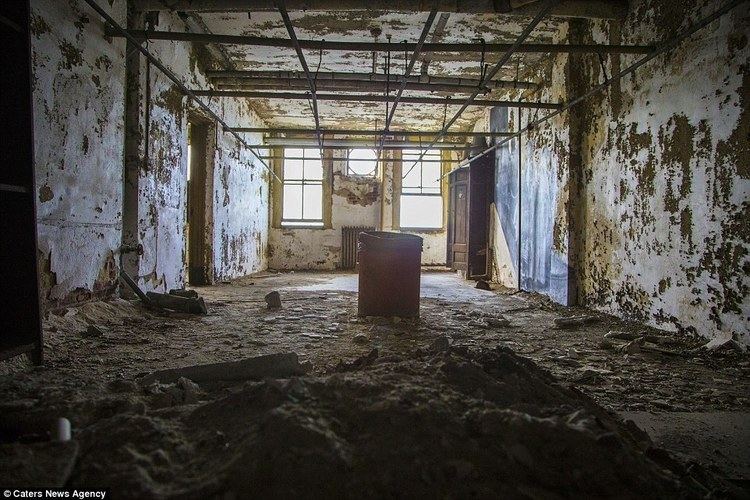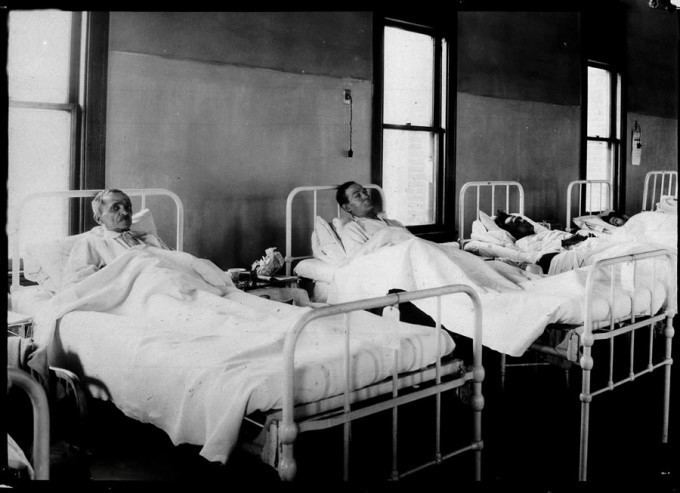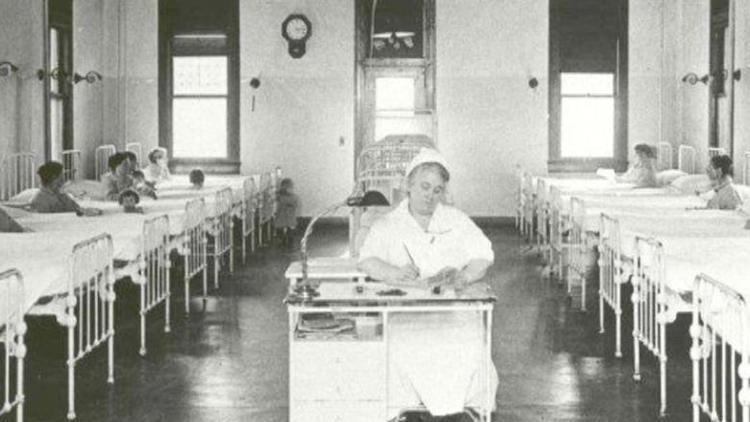Elevation 7 ft (2.1 m) Designated October 15, 1966 Year built 1902 | Reference no. 66000058 | |
 | ||
Architectural style Renaissance Revival architecture Similar Ellis Island, Zagray Farm Museum, Statue of Liberty National, Ellis Island Hospital Morgue, Frosty Drew Observatory | ||
Inside the ellis island immigrant hospital
The Ellis Island Immigrant Hospital was the United States’ first public health hospital, opened in 1902 and operating as a hospital until 1930. The hospital served as a detention facility for new immigrants who were deemed unfit to enter the United States after their arrival; immigrants would either be released from the hospital to go on to a new life in America or sent back to their home countries. The hospital was one of the largest public health hospitals in United States history and is still viewed today as an extraordinary endeavor in the public health field. While the monument is managed by the National Park Service as part of the National Parks of New York Harbor office, the south side of Ellis Island has been off-limits to the general public since its closing. Efforts to restore the hospital buildings and others on the island are being made by government partner Save Ellis Island. In October 2014, the hospital opened to the public for small group hard hat tours.
Contents

History

Twelve million immigrants were processed through the Ellis Island Immigration Center during its years of operation. Every immigrant had to go through a thirty-second health inspection upon arrival, although the inspections were often directed more at the immigrants who arrived from second or third class. Tens of thousands of immigrants, or one out of every five, received a chalk mark on their clothing, signaling a health deficiency. These immigrants were often sent on to the Ellis Island Immigrant Hospital to be detained until they recovered or were deemed too sick to enter the United States, in which case they would be sent back to their home countries. If even one family member was sick, it often meant that the entire family had to return home. However, nine out of ten patients who entered the hospital were eventually cured and allowed to enter the United States.

The Immigrant Hospital saw an incredible range of disease, from tuberculosis, cholera, trachoma, and diphtheria, to tropical diseases imported from the opposite side of the earth. The hospital was considered to be one of the most extensive public health systems in the world, using advanced methods in medicine that had just been introduced, such as fluoroscopy and an autoclave that could sterilize entire mattresses. For many immigrants, new medical equipment was unfamiliar and scary. According to one New York Times article, “those less fortunate had to submit to physical inspections that required stripping off all of one’s clothing – an entirely foreign concept, particularly to many immigrant women. Some immigrants had no idea what X-ray machines did; others were fearful that their clothing – or the money sewn inside its seams – would be stolen.”

By 1914, the hospital was fully operational; in that year, over 10,000 patients from 75 different countries were treated. In all years of operation, from 1902 to the 1930s, over 3,500 immigrants died at the Immigrant Hospital. However, 350 babies were also born on the island, and were often named after the nurses and doctors that helped deliver them. Twenty years after opening, the hospital, as well as Ellis Island itself, was in decline due to tightening restrictions on immigration in the United States. In 1930, the hospital closed its doors.

Now discredited, eugenic beliefs played a small role at the hospital. Doctors would use metal calipers to measure the circumference of immigrants’ heads, and immigrants of “superior racial stock” were often favored when entering the United States. Additionally, many immigrants were detained at Ellis Island for mental illness and placed in the hospital’s psychiatric ward; it is likely that many of these immigrants were not actually mentally ill, but that cultural differences and a language barrier, as well as the immigrants’ anxiety about a new country, made them appear mentally ill.

After the hospital was closed, the FBI occupied the space as an office through the 1930s. During World War II, disabled American servicemen were sometimes housed on the islands, as well as some German and Italian prisoners of war. In 1954, the islands were officially abandoned by the Coast Guard and declared “excess federal property.” In 1996, the World Monuments Fund listed the hospital as one of the world’s 100 Most Endangered Properties, a warning echoed by the National Trust for Historic Preservation, which put the buildings on the list of “most endangered historical places in the United States.” A study conducted by the New York Landmarks Conservancy estimated that with about $3 million of federal funding, the Ellis Island Immigrant Hospital could be stabilized for the next 15 years. According to the Conservancy, 15 years would allow time to develop a long-term preservation plan.
Structure
The Ellis Island Immigrant Hospital consisted of 22 buildings spread over 2 islands in New York Harbor. The islands were man-made, using excavated dirt and concrete from the New York City subway system.
The main building of the hospital originally consisted of 120 beds and was eventually expanded to three times that size. The psychopathic ward housed thirty beds while the contagious disease hospital contained 450 beds. Additionally, there were four operating rooms and a morgue. An autopsy amphitheater in the hospital, which contained an eight-cadaver refrigerator, became a well-known teaching hall, drawing medical observers from teaching hospitals in the United States and Europe. Eventually, the hospital boasted 28 wards, including separate wards for men, women, children, surgery patients, and the insane.
During its peak years, the hospital employed over 300 doctors, nurses, and other staff, many of whom lived in dormitories on the islands. Red Cross workers also volunteered frequently, with a special focus on making the hospital more comfortable and enjoyable for the immigrant children. A hospital school taught children about personal hygiene, neatness, and good manners.
Documentary
Forgotten Ellis Island, a documentary by Lorie Conway, explores the abandoned buildings on the island and covers the history of the hospital. Conway also tracked down immigrants and descendants of immigrants who had spent time in the hospital and discussed their experiences with them. The film premiered on Ellis Island and was later shown on CBS in 2007.
